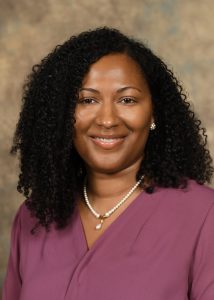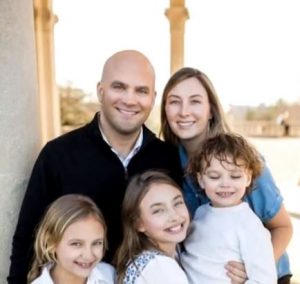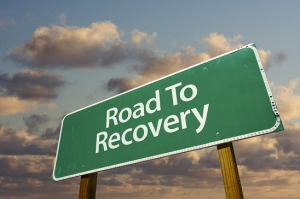
Services, resources and research unmatched in Midwest
Mental illness is a condition that affects one in five Americans[i]. While more celebrities are revealing their own struggles, and research has led to new understanding and treatments, mental illness remains shrouded in stigma. Many barriers prevent access to treatment as well, including cost.
Communities across the country are stepping up to confront these challenges. Cincinnati is increasingly being recognized as one of the leaders.
When Frances and Craig Lindner founded Lindner Center of HOPE, their dream was to build the nation’s leading mental healthcare facility. That was in 2008.
Today, Lindner Center of HOPE is a nonprofit renowned regionally and nationally for the depth and breadth of services offered in one location. Mental health researchers around the world look to Lindner Center’s research team for the latest findings in the field.
How did the Lindner Center of HOPE earn its distinguished reputation? And what does this mean for tri-state residents and families looking for help with mental illness?
Lindner Center of HOPE is a Leading-Edge Care Center
It starts by staying on top of emerging trends in mental healthcare. The Lindner Center has launched programs to meet needs for current issues like Internet and gaming addiction[ii] and substance abuse detoxification[iii], while continuing to treat a comprehensive list of mental disorders.
Having the right people and partnerships in place is also vital. Since 1996, Lindner Center president and CEO Paul E. Keck, MD, has been among the world’s top 10 most cited scientists in the field of psychiatry and psychology. Susan L. McElroy, MD, chief research officer, was the eighth most cited in the same period.
In the decade since the Lindner Center of HOPE opened its doors, it has cared for more than 37,000 patients from all 50 states and 10 countries. Its multidisciplinary, team approach provides continuous personalized care for each individual.
Local Collaboration Leads to Better Treatment
Partnerships between the Lindner Center, UC Health and Cincinnati Children’s Hospital mean each of these world-class healthcare providers connect seamlessly to give local patients access to the latest treatments available, and a broad array of specialized medical services.
Together with the University of Cincinnati, the Lindner Center was among the initial members that established a national network of mental health centers similar to those established for cancer and cardiac care. A founder of the National Network of Depression Centers, Lindner Center has conducted more than 100 studies with renowned health research organizations like Mayo Clinic and Cincinnati Children’s. This work has brought new, effective treatments first to members of the local community who have lost hope for a better life.
This level of collaboration between world-leading institutions, and the breadth of services offered at Lindner Center is unmatched in the Midwest and among the best nationally.
As one patient’s parents said, “Without the Center, it’s doubtful (our son) would be alive today and certainly not the productive young man he is now.”
Continuing the Fight
We have never had better evidenced-based treatment and achievable recovery for psychiatric disorders than we do now. Yet, the scale of the problem is growing.
Americans are now 2.5 times[iv] more likely to suffer from a major psychiatric disorder in their lifetime than cancer, heart disease and diabetes combined. Fewer than half of the people who need care receive help, often due to stigmas associated with the disease. Insurance reimbursement for mental healthcare in Cincinnati is among the lowest in the U.S.
The Lindner Center of HOPE is uniquely positioned to fight this crisis. In addition to new and ongoing programs, community leaders Linda and Harry Fath, and Frances and Craig Lindner, pledged $75 million[v] to the Center to further enhance treatment and reduce stigma.
As a non-profit, the Lindner Center depends on financial support to meet the high demand for essential services. Philanthropic gifts have enabled the Center’s clinicians to enhance thousands of lives, while expanding our community education and critical research programs.
There is no better time than now to help others who are suffering. A recent combined $75 million donation from Cincinnati humanitarians Linda and Harry Fath and Frances and Craig Lindner is the foundation of the Center’s Challenge Of Hope campaign, with the goal of raising an additional $50 million.
Your donation will help make unprecedented strides in removing barriers for people taking needed steps toward mental wellness.
To share your gift of HOPE today, please go to: LindnerCenterofHope.org/donate
About the Lindner Center of HOPE
Lindner Center of HOPE, located in Mason, OH, is a comprehensive mental health center providing patient-centered, scientifically advanced care for individuals suffering with mental illness. Learn more at LindnerCenterofHope.org.
# # #
[i] National Alliance on Mental Illness. Mental Health by the Numbers. https://www.nami.org/learn-more/mental-health-by-the-numbers
[ii] Borter G. (2019, Jan. 27). The digital drug: Internet addiction spawns U.S. treatment programs. https://www.reuters.com/article/us-usa-internet-addiction-feature/the-digital-drug-internet-addiction-spawns-u-s-treatment-programs-idUSKCN1PL0AG
[iii] Lindner Center of HOPE. 10-Day Substance Use Disorder Detox and Evaluation. https://lindnercenterofhope.org/residential-treatment-programs/detox/
[iv] Reuben, A. (2017, July 14). Mental Illness Is Far More Common Than We Knew. https://blogs.scientificamerican.com/observations/mental-illness-is-far-more-common-than-we-knew/
[v] Lindner Center of HOPE. (2017, Dec. 18). Lindner Center of HOPE Receives Commitments Totaling $75 Million from Community Leaders Linda and Harry Fath, and Frances and S. Craig Lindner. https://lindnercenterofhope.org/news/lindner-center-of-hope-receives-commitments-totaling-75-million-from-community-leaders-linda-and-harry-fath-and-frances-and-s-craig-lindner/









